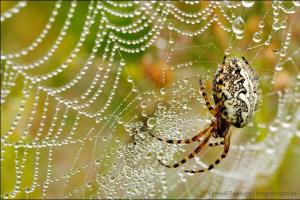Hydrangea belongs to plants of the Hydrangeaceae family. These are flowering ornamental shrubs. There are from 30 to 80 varieties of them, which today are widespread in all corners of the world. Most of shrubs and low hydrangea trees grow in areas of East and South Asia, China, Japan, North and South America.
Hydrangea inherited its name from the name of the princess since ancient times. In modern scientific botanical literature containing the classification of plants, hydrangea is referred to as Hydrangea, which translated from Greek means “filled vessel.” This moisture-loving plant is shaped like a jug. In Japan it is called a little differently, “ajisai.” Since 1820, hydrangea has also become widespread in European countries. Since the shrub could not withstand the harsh climate in these latitudes and often died in conditions open ground, then at first gardeners grew it exclusively as indoor plant. However, by the middle of the last century, thanks to the efforts of breeders, the number of cultivated varieties of hydrangea reached about a hundred garden species. In the areas middle zone About 12 varieties of hydrangea with a variety of colors are especially popular.

Most varieties of hydrangea look like a low shrub that can reach a height of 1-3 m. However, sometimes there are hydrangea trees or vines that can wrap around tree trunks to the very top. All species are divided into evergreen and deciduous groups. In our area, as a rule, deciduous hydrangeas are grown, the flowering period of which lasts from spring to late autumn. The calyx of the flower is presented in a spherical shape in the form of an inflorescence. Only internal seeds have the ability to ripen and form fruits. White flower color is common. Representatives of large-leaf hydrangea have different colors, which are significantly influenced by soil acidity. There are, for example, red, blue and lilac specimens of hydrangeas. If the soil is acidic, then blue varieties grow in it, if alkaline - pink or lilac, and neutral soil is characterized by beige flowers. The fruit of this shrub looks like a multi-layered capsule filled with seeds.
In addition to the large-leaved species, tree hydrangea is often found in mid-latitude areas, which is characterized by resistance to survival in cold conditions and also has the property of regeneration. Paniculata hydrangea, which is one of the most durable varieties among all species, tolerates frosts well.
There are other varieties of the plant: serrated hydrangea, serrate-leaved hydrangea, climbing hydrangea, radiant hydrangea, petiolate hydrangea, oak-leaved hydrangea.

In addition to regular watering, fertilizing, and loosening the soil, it is necessary to trim this ornamental shrub. Less experienced gardeners and simply flower lovers mistakenly believe that, like lilacs, hydrangeas need to be constantly pruned. Such measures may only be suitable for certain varieties. Large-leaf hydrangea does not need pruning and blooms using shoots that grew last year. In this regard, young annual shoots need to be preserved for the winter so that next summer they can flower profusely. Shrubs with snow-white inflorescences can form on young shoots. After pruning, new branches appear on the bush, which will bear a large number of flowers. It is recommended to prune in early spring or autumn. This must be done with great care so as not to damage the entire bush.
All types of hydrangeas are divided into several categories according to the pruning method. The first of them includes large-leaved, serrated, prickly, oak-leaved and liana-shaped hydrangeas. They differ from other species in that they can form inflorescences on old shoots. Pruning of these varieties should be done as follows: remove old inflorescences to the first healthy buds.
Another category of plants includes species that can form buds on young stems. These include the main most common varieties of hydrangeas: paniculata and tree-like, which are pruned in the spring before flowering. Hydrangea paniculata leaves skeletal branches and shoots that grow outward. Tree hydrangea is pruned only after it reaches four years of age. Otherwise, the plant will gradually begin to dry out, and over time it may even die. This probably won't happen if you prune the bush in the fall.
Adult plants with a developed branch system are pruned at the root, leaving about 10 cm from each shoot. For large and mature plants, it is better to carry out this rejuvenation procedure gradually so that the root system can fully recover.
Gardeners advise doing autumn pruning of shrubs, as it is better tolerated by the plant. Next year you can see abundant flowering. Hydrangeas belonging to the second category have their inflorescences cut off. This must be done in the absence of any shelter, so that the graceful branches of the bush do not break in winter due to the weight of the snow cover. In tree hydrangea, thick shoots are removed, and in paniculate hydrangea, thin shoots are removed. The branches grown this season are shortened by several buds.

Before the cold weather arrives, almost all types of this shrub must be carefully covered and prepared for winter. Hydrangeas die in mid-latitudes without insulation. Tree hydrangea is considered the most hardy and frost-resistant species. However, if the roots of the plant survive the winter, the ends of the young branches may freeze.
In autumn, it is necessary to remove the leaves of the shrub, retaining only the topmost ones. The shoots will gradually begin to thicken and become stronger. Then fertilize the soil with fertilizers containing phosphorus and potassium. The final stage is the shelter of the hydrangea.
How to cover a hydrangea for the winter
In order to decide how best to insulate hydrangea for the winter, it is worth taking into account the climate. Bushes of plants grown in the southern regions can simply be hilled up before the onset of cold weather. In the area where they flow harsh winters, they must be covered. Low bushes are covered with peat, and the surface is covered with film. Under such a unique winter blanket, the plant will be protected from freezing.
Another no less effective and proven method is the following method of shelter. The plant is tied with a rope and carefully placed on boards with nails to which the branches are tied. After which the bush is left in this position for the winter, covering it with spruce paws or sawdust. To protect such a structure from the wind, spunbond or iron sheet is laid on top.
Covering method is often used trunk circle spruce branches. To do this, the branches are bent in a radial position to the ground, and the base of the bush is covered with peat. To secure the shoots, they are secured with wooden or metal staples. The branches are covered with spruce branches and then with lutrasteel, which must be pressed down with some heavy objects. Bricks or boards work great. Hydrangea insulated in this way may not be afraid of severe frosts.
If the bush is already quite old, then its branches cannot be bent and covered in this way. Therefore, it is wrapped in lutrasteel and secured with rope. Then a metal carcass in the form of a grid, which is covered with sheets of roofing material. Dry leaves are poured inside the frame.
Over time, hydrangea's tolerance to unfavorable conditions increases, so adult shrubs do not require special shelter. However, young plants should not be left unprotected over the winter.
Large-leaved hydrangea: care, shelter for the winter (video)
Hydrangea is a shrub ranging in height from one to three meters. Varieties are divided into evergreen and deciduous. In the cold climatic zone cultivation is possible only deciduous hydrangeas
Methods for organizing wintering depend on what variety grows in your garden.
— Treelike, Paniculata– tolerate frost well and recover quickly in spring.
— large-leaved– not resistant to frost. It blooms on last year's shoots, which freeze in winter. Therefore, this variety may never bloom in open ground conditions.
— Himalayan (ground cover)- the most winter-hardy species, requiring minimal shelter for the winter.
— Chereshkova– winter-hardy, does not need shelter during frosts.
Hydrangea in autumn - preparing for winter
How to prepare hydrangea for the winter? — Preparation for wintering this charming flower consists of two stages. The first of these is care in the autumn, on the eve of the onset of the cold winter period.
The preparatory period begins in September. At this time, watering the plant is sharply reduced, gradually stopping it completely.
If it rains a lot in autumn, it is better cover plant to excess moisture didn't hit him. To do this, you can place a wire frame over the bush, which is covered with film during rain. The shelter must be made in such a way that moisture does not reach the root system. The less water the roots receive, the more successful wintering will be.
Just do not cover the plant tightly so that it does not wither or rot.
In order for new shoots formed in the current growing season to mature and become lignified, feeding hydrangeas. Fertilizer should consist of phosphorus and potassium.
Do not fertilize hydrangeas with nitrogen fertilizers in the fall. This will cause new shoots to grow, which will freeze in winter.
With the onset of cold weather, hydrangea will begin to actively shed its leaves. When a strong cold snap occurs, it is advisable to help her free yourself from the remaining foliage. 
The upper part of the stems is also cut off in the fall. remove all inflorescences. After dropping all the foliage and pruning the shoots, they should be tied up. A mulch layer is poured under the bush; it should cover the base of the bush and cover the entire root system.
How to cover hydrangea for winter?
Target winter shelter hydrangeas - preserving buds on young shoots. Winter care is necessary for hydrangeas, and this is important because flowering is ensured by them. What's the point of growing a bush that doesn't produce flowers?
Without additional shelter, it can only withstand frosts petiole hydrangea.
Tree hydrangea takes shelter in the first year after planting. An adult specimen only needs to be hilled; no additional shelter is required. But some newly bred large-flowered varieties Still, it’s better to cover it. This is due to the fact that their flowers form on last year’s shoots, and if they freeze, the plant will not bloom.
For other varieties it is required additional cover. It is necessary to cover the hydrangea before the onset of frost, since tender shoots do not tolerate frosts below minus 5.
They put it next to the bush wooden box, lay shoots on it and cover the entire structure with spruce branches or covering material.
You can also cover the base with spruce branches, then bend the branches around to the ground and secure them. The center is covered with peat or sawdust, and spruce branches are laid on the branches. The bush is covered with covering material on top of the spruce branches and fixed on all sides. At in a similar way shelter hydrangea can withstand temperature to minus forty.
If the bushes are still small, you can completely cover them with earth and top with spruce branches. Alternatively, you can install iron supports around their perimeter and stretch a mesh around it. Dry leaves are poured inside the structure and covered with film on top.
Tall old bushes have shoots that bend poorly, so the methods described for them unsuitable. They are tied and wrapped with covering material. Wire or U-shaped reinforcement is installed crosswise over the bush. The result is a kind of canopy, which is covered with film.
If the bushes are planted in a group, you can make a common shelter for them. With this type of shelter, each bush is mulched. Then iron or wooden stakes are placed around the group in a circle. The structure is wrapped with burlap or covering material. The top is covered with a layer of film or roofing felt.
As they grow older, the frost resistance of hydrangea bushes increases. So over time, you can abandon careful shelter, leaving only mulching roots.
How to help hydrangea recover after winter?
Do not rush to remove the cover from the hydrangea immediately after the onset of the first warm days. Until all the snow melts, there is a risk burn the shoots bright spring sun. In addition, the cover must be removed gradually.
The bush is freed from the film as soon as active snow melting begins. 
As soon as warm weather sets in, it’s time to check how your pet has survived the winter. This is usually done in the middle of May when the threat of spring frosts has passed.
To remove cover, select It's a nasty day so that the bright sun does not burn the shoots. You can even open the bush gradually, removing the cover in the morning and towards evening.
Free the bush from the mulch layer and loosen the soil. If the ground under the bush is too dry, you should water generously his warm water. You can add a little citric acid to the water.
After opening, the bush is pruned, leaving three to four flower buds on each shoot. It is also necessary to remove dry, frozen stems. For thinning, shoots that have reached four years of age are removed.
Don't cut the shoots too short; you may remove all the flower buds. Pruning must be done before leaves begin to form.
If the bush was damaged during wintering, then it is more advisable to prune it after the first leaves appear. Then you will immediately see which shoots are damaged and need to be completely removed.
After pruning, the bush needs to be fed nitrogen fertilizers. This will give impetus to the growth of shoots and the formation of buds.
Do not feed hydrangea with ash, as it will deoxidize the soil and the bush will begin to get sick.
Take care of your hydrangea in winter by building the right shelter for it, and it will give you beautiful blooms in summer.
Photo

In regions with cold winters, only paniculate hydrangeas can safely endure frosts down to -30 degrees. And even they require covering the root system. The remaining species must be carefully covered in the fall, otherwise their branches and growing points will freeze over the winter. About, how to trim hydrangeas in autumn, and you can learn about its proper shelter from our article.
Flowering shrubs with gorgeous spherical inflorescences of a wide variety of colors can decorate the garden until autumn. And if they do not require special care during the summer, in the fall it is necessary to carry out a number of procedures to prepare the bushes for the onset of frost.
Such procedures include:
- Specific pruning of some types of hydrangea.
- Feeding bushes in August-September with fertilizers containing potassium and phosphorus. In autumn, hydrangeas are not fertilized with nitrogen.
- From the first month of autumn, gradually reduce watering and reduce it to a minimum by the end of September.
- Tear off all the lower leaves on the shoots so that the stems become woody (leave only the top ones).
- Remove all fallen leaves and debris from around the bushes. All this must be burned so that fungi and pests do not survive in them.
- Taking into account the type of flower, carry out the necessary covering procedure.
Let's look at the first and last points in more detail.
Do I need to prune hydrangeas for the winter?
Basically, pruning of shrubs is done for the purpose of its rejuvenation. What you need to do for this: 

How to cover a hydrangea for the winter?
When all the above procedures have been completed, it’s time to take care of covering the hydrangeas for the winter. The method of shelter depends on the region. In the southern regions there is no need to particularly cover hydrangeas. In Paniculaceae and Tree-like species, it is enough to hill the bush high. But if cold snaps are possible in winter, then cover the young plants with additional peat and non-woven material.
Shelter for winter of large hydrangea bushes
It is quite difficult to bend such plants to the ground, so they are covered in the following way: 
- The tree trunk circle is covered and covered with dry soil.
- The bush is carefully wrapped with a special material - lutrasil, which is secured with tape or rope.
- From metal mesh or wooden planks a frame is built around the shelter.
- The internal space between the bush and the mesh is filled with dry leaves.
- The frame is covered at the top plastic film or roofing felt.
This air-dry method is impossible would be better suited for not very young Tree and Paniculate hydrangeas.
Covering hydrangea with spruce branches
To implement this method, you will need to prepare:
- metal or wooden staples;
- spruce spruce branches (a lot);
- peat;
- lutrasil;
- brick or boards.
First of all, all the trunk circles of the bushes are covered with spruce branches, on which the stems are laid from the center of the plant to the sides. The shoots at the base are pinned to the ground with staples.
Spruce branches are laid on the lying stems, and the center is filled with peat. Everything is covered with lutrasil on top and pressed against the edges with bricks or boards. Such a shelter will not be able to be disrupted by the wind, and it will be able to protect the plant even in frosts below -40 degrees.
Shelter of young hydrangeas
A small bush can be wrapped for the winter in the following way:
- Cover the tree trunk circle with dry soil to protect the root system and lower buds from freezing.
- Place small boards with nails driven into them around the bushes. The nails must stick out so that the rope can be wound around them.
- Carefully tie the hydrangea bush with a rope and carefully begin to pull it towards the boards.
- Tie the ropes to the nails.
- Cover the shoots with sawdust or cover with spruce branches.
- Cover the top with spunbond, lutrasil (30 grade) or a simple sheet old iron.
 These are the most common ways to cover hydrangeas for the winter. Experienced gardeners They have already adapted and are covering their pets with improvised materials.
These are the most common ways to cover hydrangeas for the winter. Experienced gardeners They have already adapted and are covering their pets with improvised materials.
You should also know that you should not immediately open the bushes as soon as the first warm days arrive. Night frosts and returning colds can damage plants that have not yet matured. There is no need to be alarmed if you see mold on the shoots after cleaning the shelter. It can simply be washed off with water.
Young plants need to be covered for the winter in any case. But every year their winter hardiness increases, and soon adult paniculate and tree hydrangeas will not need to be covered. It is enough just to hill up their tree trunk circle.
When to cover hydrangea for the winter?
This should be done depending on the weather in your area. Sheltering is usually done with the onset of significant frosts, but the cold has not yet set in. This period occurs in early or mid-October. In warmer areas it may shift to late October. If it’s still quite warm outside, you can first simply hill up the bushes, and when the temperature drops below 0 degrees, start covering the plants.
Hydrangeas in bloom look so beautiful that you simply can’t take your eyes off them. But in order for the bushes to delight with their flowering, they need proper preparation for winter, which consists of pruning and covering the bushes for the winter. And then next year all your neighbors will envy your garden.
Gardeners have been debating for years whether it is necessary to prune hydrangeas in the fall or is it enough? spring pruning. Each side makes its own arguments, and it is easy for a beginner to get confused in opinions. The truth, as always, is somewhere in the middle.

As a rule, hydrangeas are pruned in the spring, but this method has its drawbacks. If the plant has already woken up and started to grow, all the cut points will “cry” with juice. There are often cases when tree-like hydrangeas simply “bleeded juice” and died or became so weakened that they could not bloom in the coming season. Pruning hydrangeas for the winter will protect against this outcome, but you need to know exactly what type of plant your plant is and take into account its specifics.
Pruning tree hydrangea in autumn
If tree hydrangea has settled on your site, then knowing how to prune it for the winter is especially important. In terms of its shape and growth rate, it is an ordinary shrub, which is most often formed either with a free crown or a ball. U tree hydrangea there are always many shoots, both zero (from the root) and those appearing on the skeletal branches. Due to its prolific growth, this bush requires all types of pruning and almost all of it can be done in the fall.
- Sanitary pruning consists of removing broken branches, dried shoots, as well as the obligatory removal of dried inflorescences and all leaves except the top ones.
- Anti-aging pruning applies to branches older than 4 years, especially those covered with weak and thin shoots. Such branches are cut to zero.
- Thinning pruning of tree hydrangea comes down to removing weak zero shoots and all the growth that thickens the bush, i.e. growing inside the crown.
- Pruning for flowering is done last. Since tree hydrangea blooms on the current year's shoots, in the fall all main branches can be shortened to 2-4 pairs of well-developed buds. Next year, strong, lush flowering branches will grow from them.

Even if you did all the pruning of the hydrangea in the fall, be sure to inspect the bush with the onset of spring - some branches may have frozen or broken under the weight of the snow and will also have to be removed.
Pruning panicle hydrangea in autumn
Paniculata hydrangea, like tree hydrangea, blooms on the shoots of the current year, so autumn pruning is not harmful to it and will even benefit it. True, it will take much less time, if only because this type of hydrangea does not produce such lush growth and as many zero shoots as the previous one.
In this case, the question of whether it is necessary to prune the hydrangea for the winter does not even arise, because it is necessary. From each bud on the skeletal branches of paniculate hydrangea, a shoot grows, ending in an inflorescence, and in a few years without pruning the bush turns into an impassable ball. Alas, it does not have the strength to bloom, and the more inflorescences appear, the smaller, weaker and paler they become.

The main task when pruning paniculate hydrangea in autumn is to thin out the bush and remove all thin, non-viable shoots. Don’t forget about the proper formation of the crown - regularly remove zero shoots, and cut off strong skeletal branches in the fall, leaving 1-3 pairs of buds.
If you want to grow paniculate hydrangea in the form of a trunk, then pruning and shaping should be done in spring and summer.
Pruning large-leaved hydrangea in autumn
The most difficult thing is to decide how to prune hydrangea for the winter when it comes to the large-leaved representative of this plant. The decision in this case will depend not only on the type of bush, but also on its variety, age and even the climate in which it grows.
It is generally accepted that large-leaved hydrangea blooms on last year's shoots. This is not entirely true, because inflorescences form on this year’s shoots that grew from buds on last year’s branches. The closer to the top of the branch the young shoot is, the greater the chance that it will bloom. Therefore, pruning must be carried out especially carefully, trying not to choke the bush or deprive it of the opportunity to bloom.
Visible behind almost everyone's fence garden plot. Large, with caps of inflorescences, smaller and more modest, or only in leaves. The decorative quality of this popular shrub, which is not too picky about growing conditions, is influenced by climate, weather during the growing season, its age and, of course, our care. What can you do in the fall to ensure your hydrangeas look healthy and bloom profusely next summer? First of all, this correct pruning and proper shelter for the winter.
Is autumn pruning required for hydrangeas?
Gardeners often wonder whether it is necessary to prune hydrangeas in the fall. Some gardeners carry it out only in the spring, while some do without pruning at all, preferring not to injure the plant in any way. Experience shows that to preserve hydrangea, annual abundant flowering and creating the desired shape of the bush requires carefully thought out and correctly carried out pruning.
Attention! If pruned incorrectly, hydrangea may not bloom at all.
It all depends on the type of plant. The most popular and common are paniculate, tree-like and large-leaved hydrangeas. Other species are also cultivated - Bretschneider's hydrangea, petiolate, serrated, ashy. The first of them bloom on the current year's shoots, the others on last year's shoots.
Hydrangea blossom
According to the type of flowering, hydrangeas are divided into two groups, which require different approaches to pruning. They are represented by:
- the first group is large-leaved hydrangea;
- the second group is paniculate and tree hydrangeas.
Pruning hydrangeas of the first group
Paniculata hydrangea should be pruned like a tree, without disturbing the skeletal branches. If several shoots grow from one place, leave only those that grow outward. Remove old and damaged shoots. Remember paniculata hydrangea loves moderate pruning and will respond to it with a large number of panicle inflorescences. At the same time, when large quantities The shoots that accumulate from year to year thicken, the plant weakens, and the inflorescences become smaller.
Attention! The purpose of pruning young paniculate hydrangeas is to form a bush; for adults, it is to thin out and rejuvenate.
With the help of pruning, you can get the usual bush or standard form (a sort of bouquet on a stick, very impressive).
For tree hydrangeas in the fall, only sanitary pruning is carried out, removing broken, dried out or pest-damaged shoots. Remove dry inflorescences. Do you want to rejuvenate your bush? Trim it mercilessly, leaving shoots no more than 10 cm.

Hydrangea pruning diagram
Pruning hydrangeas of the second group
In autumn, large-leaved hydrangeas cannot be cut off with young, not yet flowering shoots, because flower buds have already formed on them, which will bloom next summer. Target autumn pruning– sanitation of the bush and its rejuvenation. In this type of hydrangea, the shoots live fruitfully for 4-6 years. Every autumn, cut out part of the old shoots to the very base - you will get strong replacement shoots and good flowering.
Advice. To give the bush compact shape and maintain it, completely cut out inclined and crossing shoots.
How to preserve hydrangeas in winter - shelter for the winter
Before leaving for winter, decide whether you need to cover the hydrangea on your site:
- evaluate the climatic features of winter in your region:
- evaluate the winter hardiness of hydrangea;
- select the appropriate type of shelter.
Attention! Wintering affects the survival of the plant, its condition in the future growing season, the timing and quality of flowering.
By decreasing winter hardiness, hydrangea types are arranged in the following order:
- paniculata;
- tree-like;
- large-leaved.
Paniculate hydrangea tolerates cold better than other species. It can overwinter without shelter, and if it freezes, it will quickly recover in the spring. For it, it is enough to mulch the tree trunk circle to protect the root system.

Pruning will help hydrangeas rejuvenate.
The next most cold-hardy species is tree hydrangea. Mature plant can survive the winter well without shelter, also with a mulched tree trunk. Young plants often have young shoots that freeze in cold winters.
Large-leaved hydrangea is thermophilic. It can go through the winter period without shelter only if the bush is small, bent to the ground and completely covered with snow at least 70 cm thick.
Advice. Large-leaved hydrangea and young (up to 4 years old) bushes of paniculata and tree hydrangea must be covered for the winter.
Prepare the hydrangea for the upcoming winter: a few weeks before sheltering, stop watering, switch from nitrogen fertilizers to phosphorus-potassium ones; immediately before sheltering, remove dry leaves, except for the top leaves of the large-leaved species (they will protect the flower buds from the cold).
Ways to cover hydrangeas for the winter
First way– leaves. Follow the steps:
- tie the branches with rope;
- tilt the branches towards the ground and secure them, for example, with wire pins or rope to driven pegs;
- cover the plant with leaves;
- secure the shelter, for example, with stones.
Second way- spruce spruce branches. Follow the steps:
- cover the soil around the bush with spruce branches;
- lay the shoots on the spruce branches;
- fix the shoots on the spruce branches;
- Place another layer of spruce branches on top;
- cover with covering material or a simple cloth;
- secure the cover.

Shelter will help hydrangeas survive the winter
Third way- air-dry shelter. Follow the steps:
- sprinkle the base of the bush with dry soil;
- tilt the bush, but not too close to the ground;
- fix the inclined shoots;
- install a low frame of boards or wire so that the snow completely covers it and is strong enough to support a layer of snow;
- cover the frame with non-woven material, thick paper, on top – with water- and light-proof material; leave holes for ventilation;
- After the onset of cold weather and snowfalls, close the holes.
Organize a reliable wintering for your hydrangea and in summer you will see it in all its glory.








